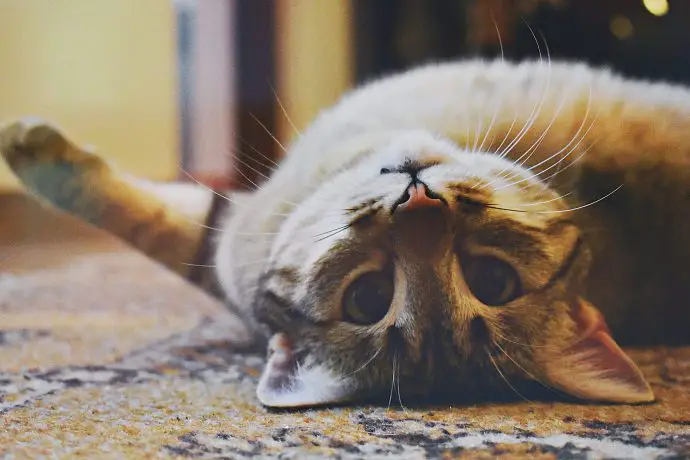Understanding your cat’s development is crucial for providing them with the best care at every stage of their life. From kittenhood to adulthood, each phase comes with its own unique needs and behaviors. Knowing what you can expect during these stages can help you ensure your feline friend grows up healthy and happy. Here, we’ll dive into five essential aspects of cat development, from the importance of socialization to the physical and emotional milestones they’ll experience.

Socialization is Key in the Early Stages of Cat Development
One of the most critical stages in a cat’s life is their early socialization phase. During the first few weeks to months of life, kittens are learning how to interact with their environment, people, and other animals. Proper socialization during this time helps shape their future behavior and temperament.
Kittens that are exposed to a variety of experiences, including gentle handling by humans, interactions with other animals, and exposure to different environments, are more likely to grow into well-adjusted adults. Failing to properly socialize your kitten can lead to behavioral problems later in life, such as aggression, fear, or anxiety. This stage is also when kittens begin to learn important social cues from their mother and littermates, so allowing them to stay with their family for the first 8-12 weeks is crucial. Providing your kitten with a range of positive experiences early on will set the foundation for a happy, well-balanced cat.
Early Kitten Development and Eye Opening
When do kittens open their eyes? Kittens typically begin to open their eyes when they are about 7 to 10 days old. At birth, kittens are blind, and their eyes are sealed shut. Once they start to open their eyes, their vision is still blurry, and it takes several weeks for their eyesight to fully develop. It’s important to avoid exposing kittens to bright light during this period, as their eyes are sensitive.
Each kitten may open their eyes at a slightly different pace, but by the time they are two weeks old, most kittens will have their eyes open and be looking around. At this stage of development, they stay with their mama and if you try to touch or move them too often, the mama cat may try and find a new hiding spot for her babies.
Play and Stimulation Contribute to Healthy Growth
Play isn’t just fun for cats; it’s essential for their mental and physical development. From the moment they can start moving, kittens are driven by their instinct to explore, hunt, and play. These activities help them develop motor skills, improve coordination, and learn about their surroundings.
For young kittens, interactive play with toys like feathers, strings, or balls helps them hone their hunting instincts and improves their physical health. As they grow, the importance of play doesn’t diminish. Regular playtime provides necessary exercise, which prevents obesity—a common problem in indoor cats—and stimulates their mind, keeping them mentally sharp. As they transition from kittenhood to adulthood, maintaining an environment that encourages regular physical activity is crucial. Scratching posts, climbing trees, and puzzle toys can help keep them engaged and provide mental stimulation throughout their lives.
Regular Vet Visits Are Essential During All Stages of Development
Routine veterinary care is critical at every stage of your cat’s development. From vaccinations to wellness exams, regular vet visits ensure that your cat stays on track with their health milestones and that any potential issues are caught early. For kittens, the first year of life is particularly important for setting the foundation for lifelong health.
Kittens should receive a series of vaccinations, typically starting at six to eight weeks of age, to protect them against common feline diseases. This is also the time when vets will assess your kitten’s growth and development, ensuring they’re progressing as they should be. Early spaying or neutering is also recommended, typically between four and six months, to prevent health issues related to reproductive diseases and reduce unwanted behaviors. As cats grow into adults and later enter their senior years, routine vet visits become just as important for monitoring their health.
Behavioral Development Change as Cats Grow
Understanding how your cat’s behavior changes as they grow helps you provide the right kind of support at each life stage. Kittens, for example, are naturally curious, playful, and energetic. They’ll spend a lot of time exploring their environment and learning from their experiences. This is a great time to introduce them to positive reinforcement training, which can be as simple as teaching them their name or getting them accustomed to using a scratching post.
As your cat enters adulthood, you may notice their behavior becoming more relaxed. Adult cats often establish routines and become less curious about exploring new environments. This is also the stage when behavioral issues may surface, such as territoriality or aggression if they aren’t properly socialized.
Senior cats, on the other hand, may exhibit changes in behavior due to aging. They may become less active, more prone to napping, or show signs of confusion or anxiety. It’s important to monitor these changes closely, as they could be signs of underlying health problems such as cognitive dysfunction or arthritis.
